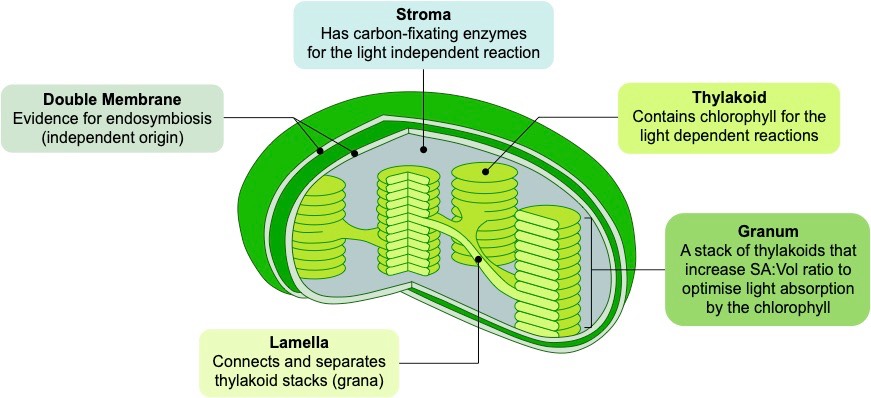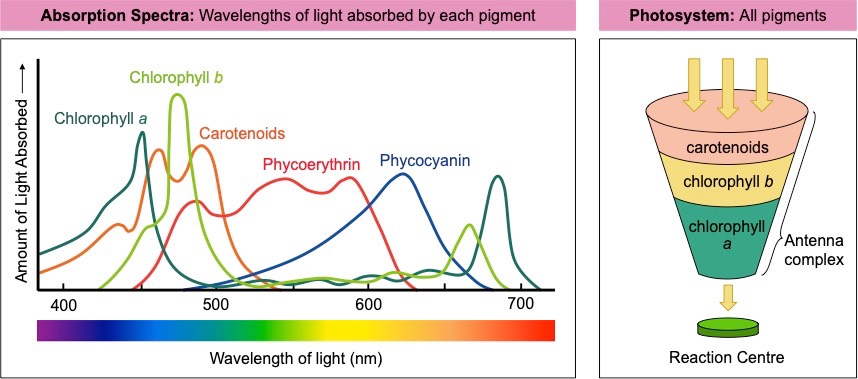Key Knowledge:
|
Chloroplasts are an organelle in plant cells that convert light energy into chemical energy via the process of photosynthesis
- The chemical energy may be transferred to a molecule that is immediately accessible (ATP) or stored as an organic compound (glucose)
- Only photosynthetic tissues will possess chloroplasts (i.e. they are present within the leaf tissue but are not found in the roots of plants)
Structure
The chloroplast is structured to support the two distinct stages of photosynthesis (the light dependent and light independent stages)
- Chloroplasts contain a series of flattened discs called thylakoids, which are arranged into stacks called grana (increases SA:Vol ratio)
- These membrane discs contain photosynthetic pigments (such as chlorophyll) and are the site of the light dependent reactions
- The internal fluid is called the stroma and contains carbon-fixating enzymes that are responsible for the light independent reactions
Chloroplasts evolved via endosymbiosis and hence retain structural characteristics consistent with an independent prokaryotic origin
- They have a double membrane structure (due to vesicular coating as part of the process of endocytosis)
- They have their own DNA (circular and naked), 70S ribosomes and their metabolic processes are susceptible to certain antibiotics

Micrographs
Typically, chloroplast micrographs should display the following features:
- They are usually round in appearance with a double membrane exterior
- The flattened membrane discs (thylakoids) are arranged into stacks (grana), which are connected by lamellae
- The internal lumen of the thylakoids is very small (this allows for a more rapid generation of a proton motive force)
- Ribosomes and chloroplast DNA are usually not visible at standard resolutions and magnifications
- Starch granules may be visible and will appear as dark spots within the chloroplast
Note: Electron micrographs of a chloroplast may differ in appearance depending on where the cross-section occurs

Chlorophyll
Photosynthetic pigments function as the main site of light absorption in the light dependent stage of photosynthesis
- Photosynthetic pigments are grouped into photosystems on the thylakoid membrane that absorb and funnel light energy
The main photosynthetic pigment is chlorophyll, which absorbs red and blue light while reflecting green light
- The absorbed light energy functions to energise chlorophyll electrons, which are transferred to an electron transport chain
- Accessory pigments may capture additional wavelengths of light in order to maximise light absorbance by the photosystems
